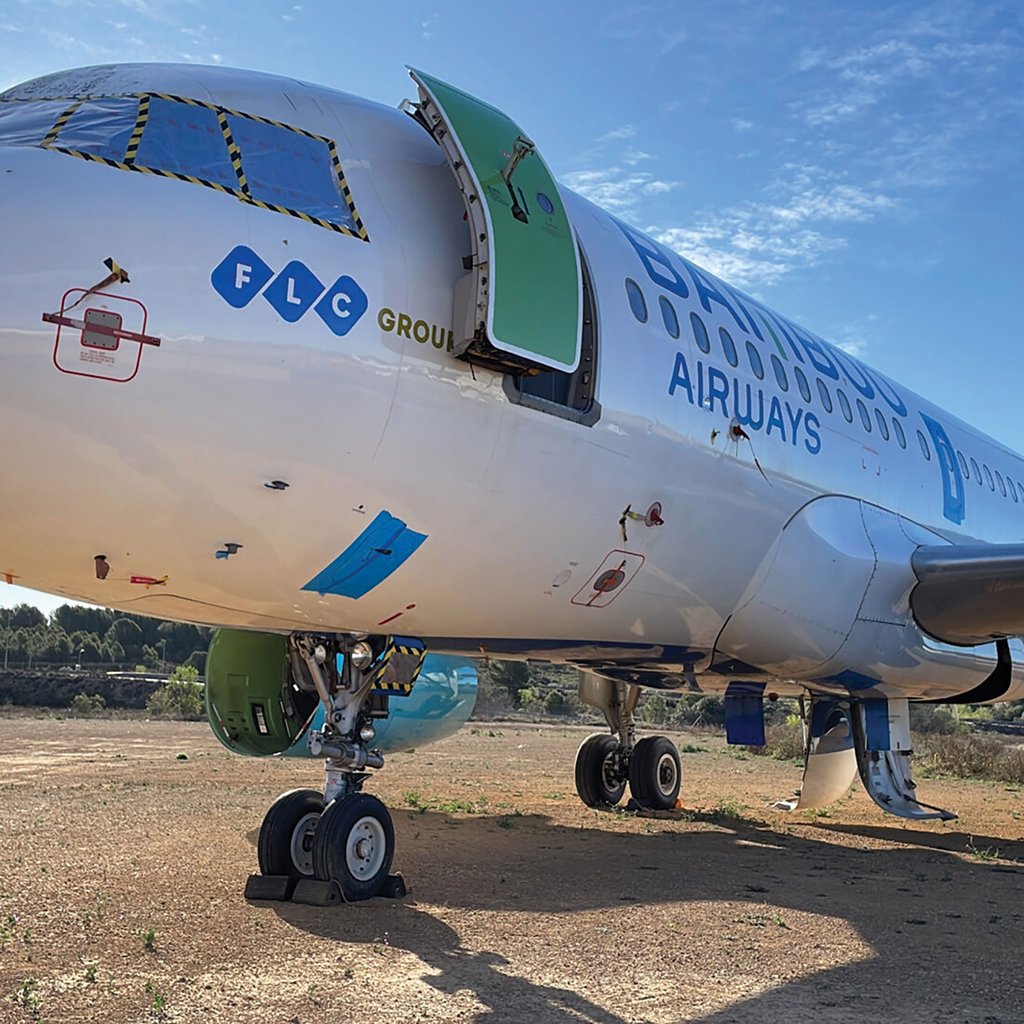This article is published in Aviation Week & Space Technology and is free to read until Jun 08, 2024. If you want to read more articles from this publication, please click the link to subscribe.

Airlines keep approved vendor lists to ensure USM has been repaired at trusted repair shops that routinely undergo audits.
Disassembly specialists are snapping up every opportunity to cannibalize aircraft for parts, and demand for used serviceable material is strong, given the post-pandemic rebound. However, after last year’s AOG Technics unapproved parts scandal, the spotlight is on the regulatory environment that should ensure the quality of materials coming to market.
According to industry experts, measuring the quality of used serviceable material (USM) entering the aftermarket relies on strict checks and balances without the need for a specific regulatory mechanism for used parts.
Werner Aero President and CEO Mike Cazaz says there is no formal process to screen USM when it enters the market. “We tear down aircraft and send the components to the OEM or independent MROs to be tested and recertified, repaired or overhauled as needed,” he says. The MRO then issues a “return-to-service” tag in Form FAA 8130 or European Union Aviation Safety Agency (EASA) 1, which are authorized release certificates documenting the airworthiness of regulator-approved products and articles. This helps provide traceability and ease the movement of products and articles throughout the aviation system.

“That is the only process that ensures the quality and serviceability of the USM today,” Cazaz says. “At the end of the day, it is up to the installer of the USM to inspect the part and its records before it gets installed on an aircraft.”
Stephen Fer, general manager at SR Technics component services subsidiary Strade, contends that in addition to dedicated EASA and FAA regulations covering the production and maintenance of aircraft spare parts, quality certifications such as Aviation Suppliers Association (ASA) 100 and Europe’s EN 9120 help to establish high standards and measurable processes.
“All members of the aviation supply chain carry a shared responsibility, from OEMs to repair shops to users,” he says. “The entire supply chain needs to function in a trustworthy way and actively contribute to ensure and continuously improve high levels of USM quality.”
Several entities oversee USM along its journey as it passes from one asset and then is installed in another. Simon Walker, AerFin senior vice president for technical, highlights several checks and balances that he believes provide suitable oversight when returning a USM component to the aftermarket.
In a typical USM supply scenario, specialists at AerFin acquire a used asset, such as an aircraft or engine, and conduct extensive due diligence on the parts intended for the aftermarket. “This will occur by way of a physical inspection and a deeper dive into records review and trace to birth for more critical components such as life-limited parts,” Walker says.
Following a part-out exercise, he explains, a stores inspector physically handles individual components to ensure each is verified by the illustrated parts catalog issued by the OEMs with accurate paperwork, checks for signs of unusual damage and segregates any components found to have discrepancies. Walker says this step follows strict internal procedures and is audited by organizations such as ASA.
Before a component can be returned to service, it undergoes a specific repair work scope by a qualified Part 145 organization accredited by federal aviation regulatory agencies, Walker says. Following the repair process, components are released with an airworthiness release certificate and supporting paperwork and then received by a stores inspector.
Finally, Walker says, the component or part can be delivered to a customer such as an airline, where a technical procurement specialist or engineer examines the USM paperwork. A technician scrutinizes the part before installing it in accordance with local procedures, checks and paperwork recording rules so that specific USM can be further tracked if necessary.
Tracking Component Quality
As several airlines are integrating USM into their maintenance strategies, current systems and processes must effectively track the quality of those components through the supply chain.
Strade’s Fer says USM parts need to be sourced from a reputable and reliable provider to guarantee authenticity and compliance with safety standards. Current processes are well established, he says, and airlines know they need to acquire USM with the appropriate release certifications, correct shop reports and often a nonincident statement.
Strade is involved in some industry initiatives, such as with Geneva-based air transport information technology provider SITA, that are exploring the use of digital technology like blockchain to codevelop concrete solutions for customers to change markedly the way components are tracked, traced and transacted.
Cazaz highlights the importance of buying from reputable suppliers that have strict systems and policies in place to preserve USM traceability.
“The key here is the traceability of the part, which usually gets substantiated through paperwork, and they generally tell where the part last operated prior to it getting to the airline,” he says.
As Cazaz indicates, the last shop visit report is just as important and sometimes determines the warranty the airline receives with the part from its supplier. “Of course, it would be great if the industry can come up with one application that can be used by the entire industry to track ownership and utilization of each part all the way from birth,” he adds. “However, that takes a consensus by all stakeholders, and that is not always easy.”
At AerFin, the key factor that end users routinely demand is integrity of the paperwork, detailing where and who used that part, how it was removed, providing a clear audit trail from the removed aircraft to the repair shop and what specific repairs have been performed for the recertification and restoration of its airworthiness.
“It is worth noting that end users and airlines keep approved vendor lists to ensure USM is being repaired at trusted repair shops that are routinely audited and [have] a robust quality management system, so airlines can be confident of the reliability of the subject part being installed,” Walker says.
Avoiding Counterfeit Parts
Recently, the sale of counterfeit parts with fake documents has sparked debate on the threat posed to the aviation aftermarket, even by used material.
“From time to time, we hear about counterfeit parts or parts that were deemed unserviceable finding their way into the market,” Cazaz says. “In today’s reality, there is no way to avoid it completely, but there are ways to ensure we can minimize those potential situations and work on solutions that completely avoid them in the future.”
Werner Aero audits its vendors periodically to ensure they meet its standards. “There will always be some bad guys out there, so you need to ensure you are dealing with reputable suppliers, because it is not only about the price, but also the quality,” Cazaz says. “Many customers make their buying decisions based on price only, and that opens the doors to scammers.”
During his 31 years in the industry, Cazaz has heard stories about used material that was deemed unserviceable but still made it back to the market under false statements. “If I recall correctly, these cases were always engine materials like blades and vanes. Most of these items are extremely expensive and used in large quantities on engines. I would highly recommend those who deal with these items to be careful who they buy their materials from,” he says.
Cazaz wants to see technology play a key role in minimizing the possibilities of counterfeit parts entering the market, possibly through a uniform, industrywide program for tracing the lives of parts. “We need to reduce paperwork and have electronic format only, and it should be a subscription-based program that will allow everyone in the industry to subscribe to and get full trace, with images, on the part,” he says.
Meanwhile at Strade, Fer has confidence in the highly regulated environment that was able to detect the fake parts in the first place. “It means that control mechanisms are in place and work. But as an industry, we need to improve continuously,” he says.
Fer adds that Strade has its own policies for quality assurance and works only with a select network of trusted partners for sourcing or repairs of USM.





